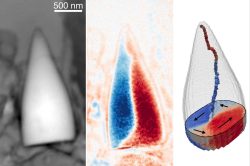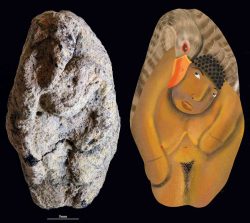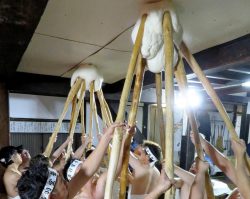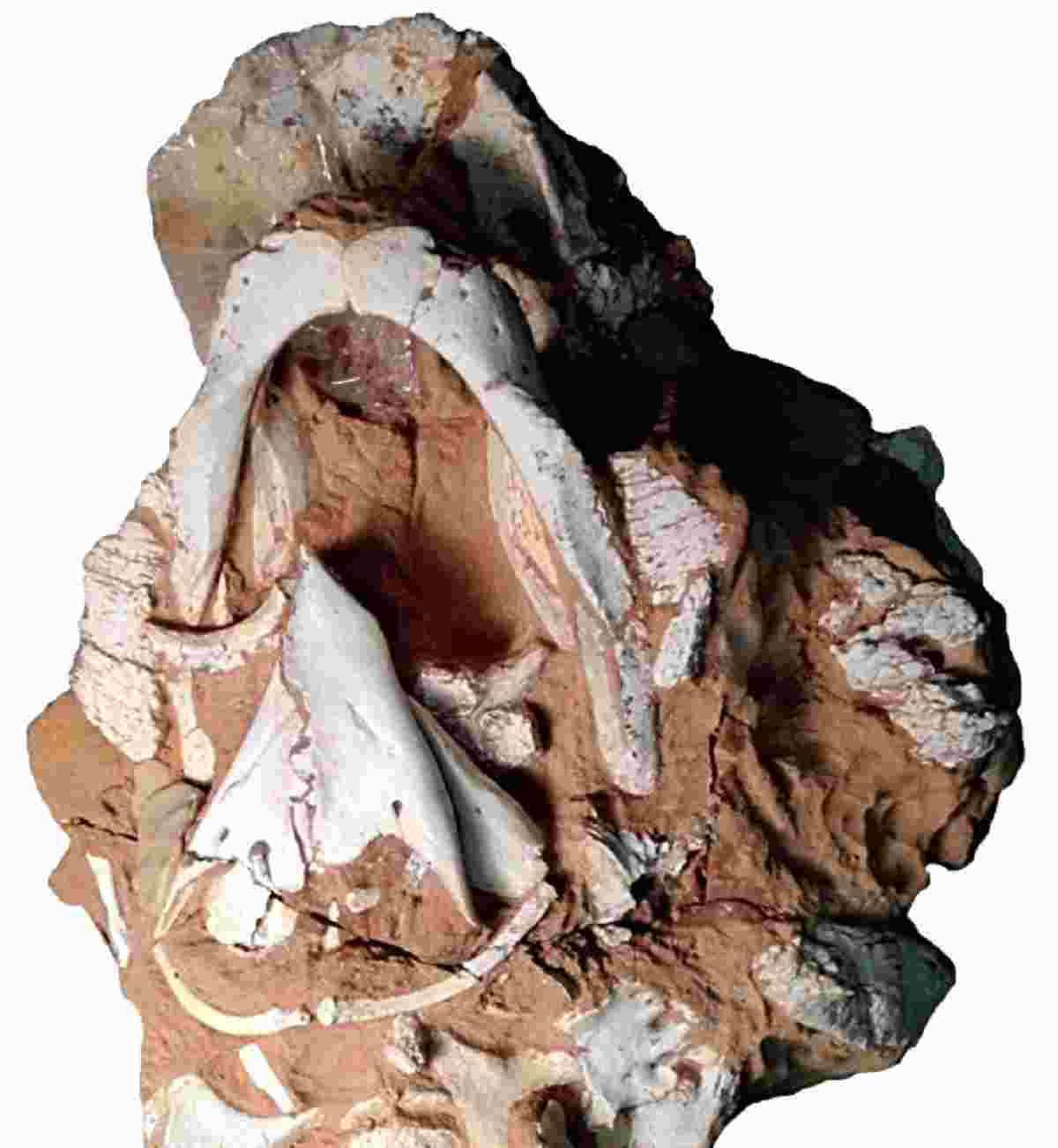
The fossil of dinosaur Pinacosaurus found in Mongolia
11:53 JST, March 4, 2023
A Japanese-U.S. research team has announced that they have identified part of a fossilized bone belonging to the voice box of a Pinacosaurus dinosaur. The fossil was found in Mongolia within a layer of earth that dates back to the Cretaceous period.
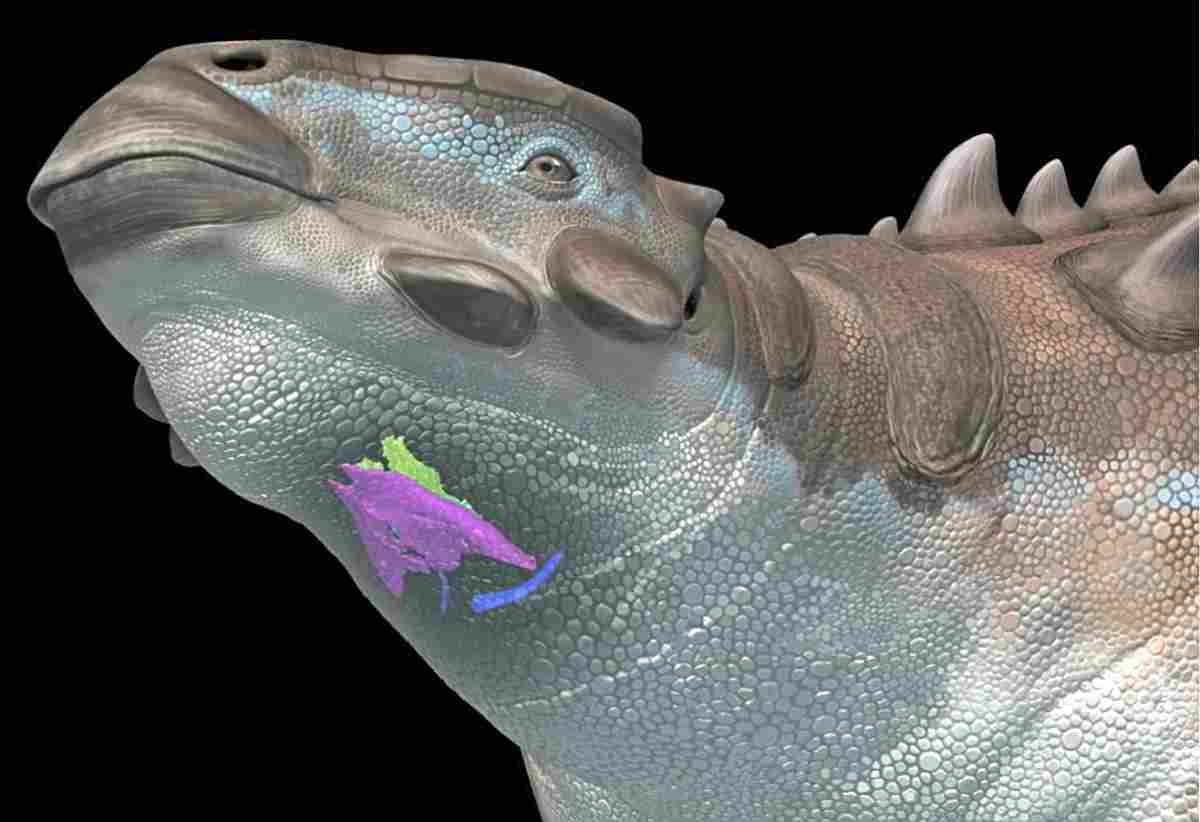
An image of Pinacosaurus and its larynx bone
This is the first time that a quadrupedal dinosaur’s voice box, or larynx, has been identified. The shape of the larynx bone, found in layers about 80 million years old, is close to that of birds, according to a paper summarizing the research results and published on the online journal Communications Biology on Feb. 15. The research raises the possibility that the dinosaur may have been able to produce sounds like birds.
Pinacosaurus was a quadrupedal herbivorous dinosaur with membrane bones covering its back as a sort of armor that protected it. The voice box bone was identified in a 3-meter-long fossil excavated from the Gobi Desert in Mongolia by the American Museum of Natural History in 2005.
Along with the U.S. museum, the Fukushima Museum and Hokkaido University examined the fossil of the head and identified multiple bones that form the larynx that serves as the entrance to the trachea.
Having compared the bones with more than 100 bone specimens of birds and reptiles, including parakeets and crocodiles, the research team found that the bones share many similarities with those of birds, and have a suitable shape to produce sounds. Birds are believed to have evolved from certain dinosaurs.
“If we can also identify such bones of other dinosaurs that lived in different periods, we may be able to figure out their evolutionary process,” said Junki Yoshida, curator of the prefectural museum and a member of the team.
“It has been assumed that the origin of birdsong can be traced back to dinosaurs, but this latest discovery is surprising because the laryngeal bones found in a dinosaur that is not a direct ancestor of them were similar in structure to birds,” said Makoto Manabe, deputy director of the National Museum of Nature and Science and a specialist in dinosaur studies. “The fact that Pinacosaurus may have been able to communicate with each other through their calls is interesting when considering dinosaurs’ social nature.”
"Science & Nature" POPULAR ARTICLE
-

Mass Oyster Die-Offs Confirmed in Japan’s Seto Inland Sea; High Water Temperature Cited as Primary Cause
-

Researchers in U.S., Japan Offer Insight into Ghostly Neutrinos
-

Big Leap in Quest to Get to Bottom of Climate Ice Mystery
-

Security Camera Footage Vulnerable to Outside Access; Investigation Finds 3,000 Pieces Exposed Online
-

Japan Plans to Develop System of AI Evaluating Credibility of Other AI Models
JN ACCESS RANKING
-

Govt Plans to Urge Municipalities to Help Residents Cope with Rising Prices
-

Japan Resumes Scallop Exports to China
-

Japan Prime Minister Takaichi Vows to Have Country Exit Deflation, Closely Monitor Economic Indicators
-

Japan to Charge Foreigners More for Residence Permits, Looking to Align with Western Countries
-

Japan GDP Down Annualized 1.8% in July-Sept.


